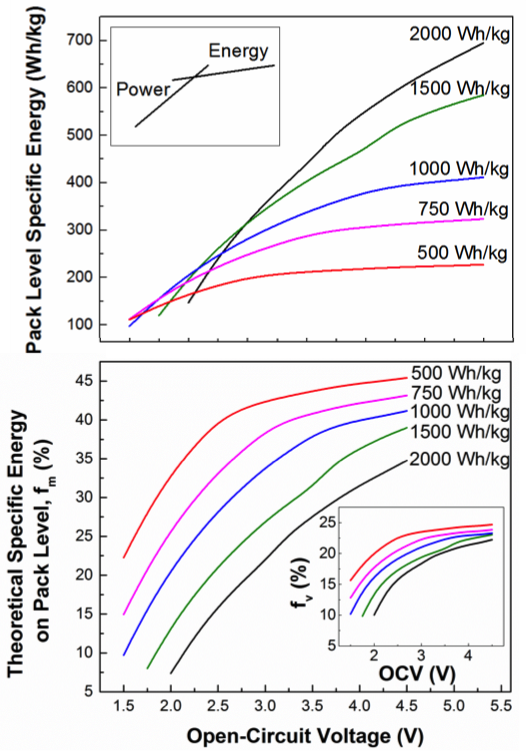
Scientific Achievements
- Cell chemistry properties, rather than engineering/packaging approach, are the key factors in determining the fraction of battery material specific energy captured at pack level
- Designing for high operating voltage (e.g., >3V) is revealed as a key route to achieving high energy density at the system level
Significance and Impact
- Next generation, high energy density materials are needed to reduce battery size and cost; however, cell voltage and impedance are found to be critical to obtain high system-level energy densities
- The voltage of a cell couple is demonstrated to have greater impact than the specific capacity of a material, contrary to conventional thinking
- Reducing the electrode and cell resistances is found as a mitigating pathway for low voltage, high capacity couples
Research Details
- Battery Performance and Cost (www.cse.anl.gov/batpac) model is modified for hypothetical cell chemistries of various voltages and specific capacities for a 50 kWh, 100 kW and 360 V battery
- Physical properties of a Li-ion metal-oxide intercalation host and lithium-metal are used as a model couple
- Results are relevant for both lithium and multivalent (e.g., Mg, Ca) based approaches for transportation technologies
- High theoretical specific energy chemistries (e.g., Li/S, Li/O2) capture a lower fraction of the theoretical values due to scaling of inactive materials (whether design is power limited or energy limited)
Work performed at Argonne National Laboratory (JCESR managing partner) by D. Eroglu, S. Ha, K.G. Gallagher, Journal of Power Sources, 2014.

